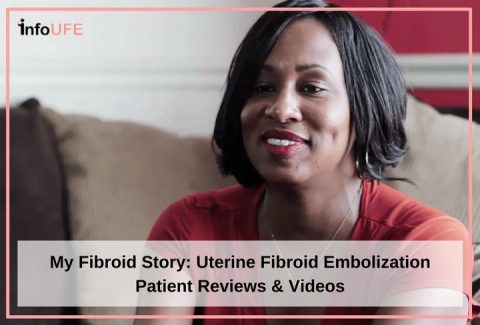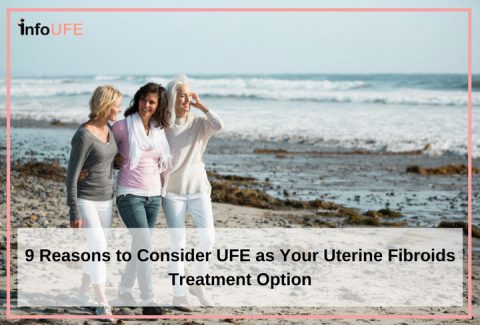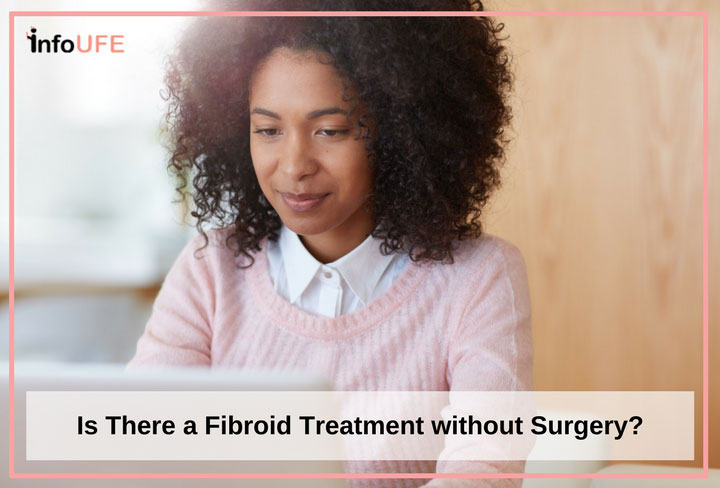
Are you weighing the options for the treatment of your uterine fibroids? If these non-cancerous tumors of the uterus are causing symptoms like pain or heavy bleeding, you should consider seeking treatment. Before you decide on what course of treatment is best, you should explore your options; including, both surgical options as well as the minimally invasive option known as uterine fibroid embolization (UFE). It’s important to weigh the benefits of UFE compared to uterine fibroid surgery, as well as understand the risk involved in either procedure.
So, what is uterine fibroid embolization?
The Basics of Uterine Fibroids and UFE
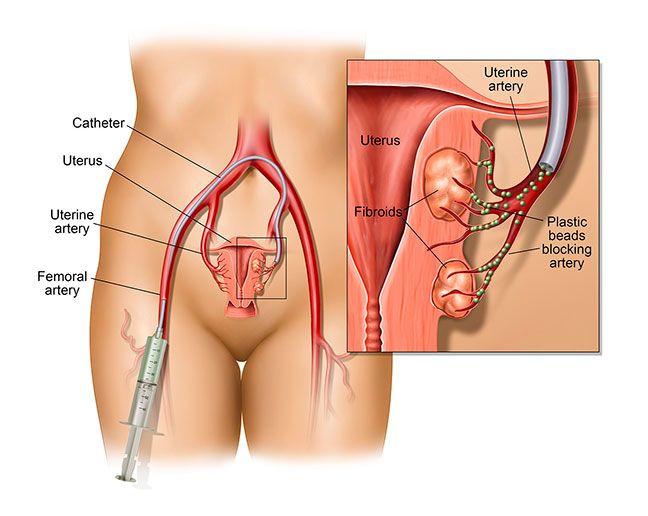 UFE is a minimally invasive treatment for uterine fibroids that’s performed by interventional radiologists. Uterine fibroids are common in women between the ages of 35 and 50.[i] They begin in the muscle wall of the uterus and can cause pain, heavy bleeding, or pressure on the surrounding organs. They can lead to urinary problems or pain with intercourse.
UFE is a minimally invasive treatment for uterine fibroids that’s performed by interventional radiologists. Uterine fibroids are common in women between the ages of 35 and 50.[i] They begin in the muscle wall of the uterus and can cause pain, heavy bleeding, or pressure on the surrounding organs. They can lead to urinary problems or pain with intercourse.
UFE may be a treatment option for women whose uterine fibroids are causing symptoms significant enough to need treatment, but who are hoping to avoid surgery. If there’s any question as to whether a uterine lesion is something other than a fibroid, then UFE may not be the appropriate procedure. In general, women who are pregnant, have chronic kidney disease, have an active pelvic infection, or urinary tract infections are not appropriate candidates for UFE.
Interventional Radiologists
UFE is performed by interventional radiologists, medical doctors trained in the use of x-ray technology to diagnose and treat disease without major surgery. Interventional radiologists are eligible to become board-certified once they have completed radiology training and an additional 2 years of training in interventional radiology.
UFE: The Procedure
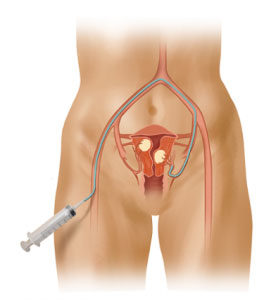 The first step in UFE procedure is to gain access to the femoral artery (leg) or radial artery (wrist). After making a small nick in the skin over the artery, the interventional radiologist inserts a catheter, or a long thin tube. Then, while watching the movement of the catheter in real time using x-ray imaging, the tip of the catheter is moved into one of the uterine arteries. Contrast dye, a special dye that will show up on x-ray, is used to help locate the blood supply to the uterine fibroids. Once that is done, small beads are placed within these arteries to block the flow of blood, nutrients and oxygen to the fibroids causing them to gradually shrink over time. When the procedure is completed, the catheter is removed and the patient taken to the recovery room.
The first step in UFE procedure is to gain access to the femoral artery (leg) or radial artery (wrist). After making a small nick in the skin over the artery, the interventional radiologist inserts a catheter, or a long thin tube. Then, while watching the movement of the catheter in real time using x-ray imaging, the tip of the catheter is moved into one of the uterine arteries. Contrast dye, a special dye that will show up on x-ray, is used to help locate the blood supply to the uterine fibroids. Once that is done, small beads are placed within these arteries to block the flow of blood, nutrients and oxygen to the fibroids causing them to gradually shrink over time. When the procedure is completed, the catheter is removed and the patient taken to the recovery room.
UFE can be performed in an outpatient setting. Rarely, for women with complex medical problems, an overnight observation after a procedure is warranted, and they should have UFE performed at a hospital. However, most women are able to go home the same day they have the procedure. Often, women recover and are back to normal activities within 2 weeks of having UFE.[i]
Benefits of Uterine Fibroid Embolization
Fibroid symptoms should improve after UFE. Within 3 – 6 months of the procedure, the uterus will normally shrink by at least 30%.[ii] Up to 90% of women also experience a decrease in bleeding within 3 months of the procedure.[iii] Size-related symptoms, such as pain or pressure, often improve in the first 3 months. Almost 80% of women report improvement in pain at least 1 year after the procedure, and bleeding is improved in 90% of women for at least 2 years.[iii] In addition to improvement in symptoms, UFE results in no scarring and keeps the uterus intact, which would not necessarily be the case after surgery.
RELATED: The Benefits of Uterine Fibroid Embolization
Risks of UFE
Immediately following the procedure, the most common symptom is pelvic pain. This pain peaks within the first 24 hours.[i] Your doctor may prescribe pain medication to alleviate any discomfort associated with the procedure. There is also a slight risk of bleeding at the catheter site. If you experience any unusual symptoms, you should make sure to contact your physician.
RELATED: Learn more about the risks of uterine fibroid embolization
Fertility and UFE
The effect of UFE on fertility, or the ability to have children, remains unclear. If you wish to have children after treatment of your uterine fibroids, please be sure to discuss this with your doctor before having the procedure.
Uterine fibroid embolization is a safe, effective, uterus sparing alternative to fibroid removal surgery. If you think UFE is a good option for you, you should request an appointment with a center near you to discuss your symptoms and goals with an interventional radiologist who performs UFE.
Sources:
i Khan, A.T., Shehmar, M., and Gupta, J.K., Uterine fibroids: current perspectives. Int J Womens Health, 2014. 6: p. 95-114.
ii Torre, A., et al., Uterine artery embolization for severe symptomatic fibroids: effects on fertility and symptoms. Hum Reprod, 2014. 29(3): p. 490-501.
iii Spies, J.B., Current evidence in uterine embolization for fibroids. Semin Intervent Radiol, 2013. 30(4): p. 340-346.
iv Mara, M. and K. Kubinova, Embolization of uterine fibroids from the point of view of the gynecologist: pros and cons. Int J Womens Health, 2014. 6: p. 623-9.
